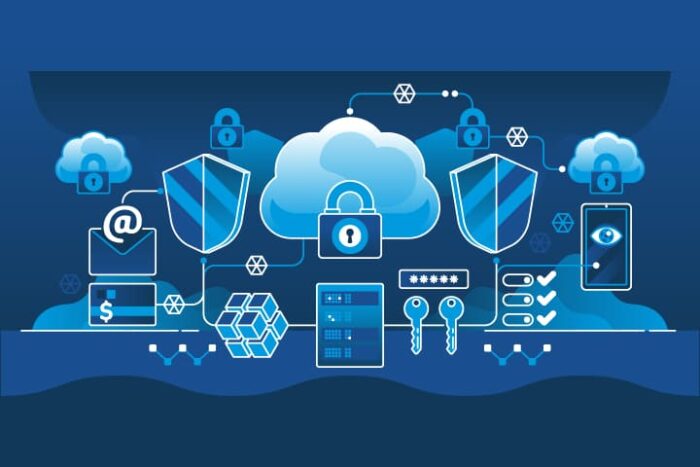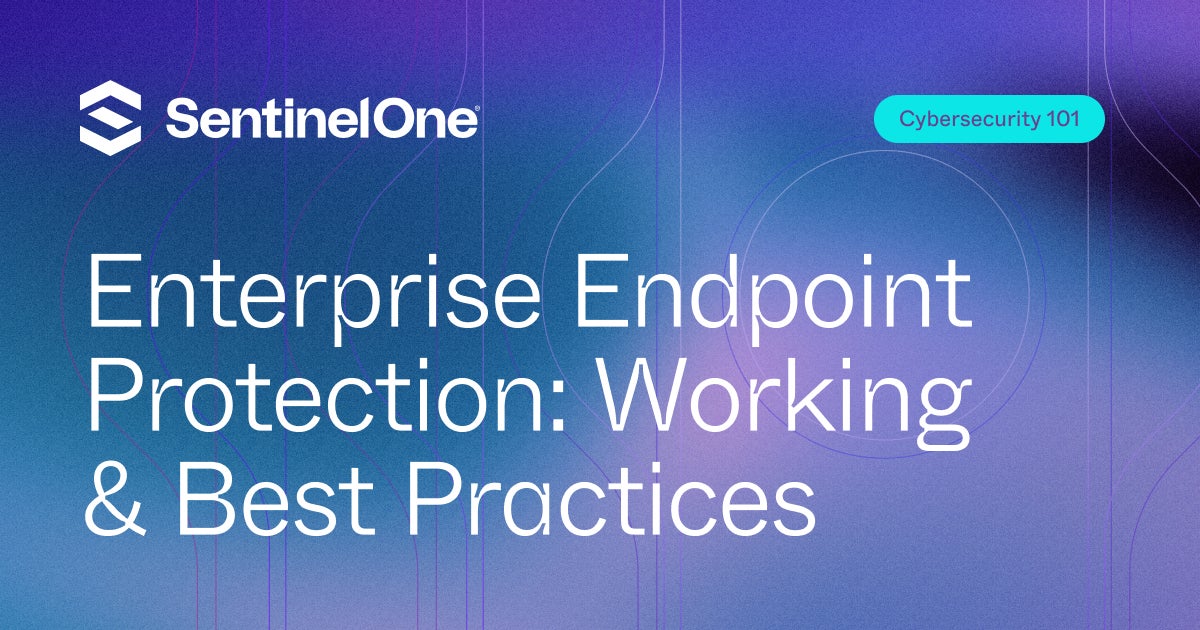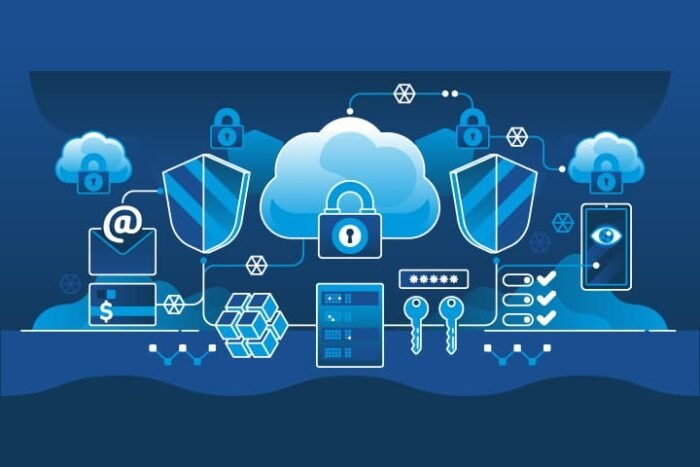
Understanding Endpoint Security Solutions
Definition and Importance of Endpoint Security
Endpoint security refers to the practice of protecting endpoints, such as devices and networks, from potential threats and vulnerabilities. In today’s interconnected world, where remote work has become commonplace, ensuring that every endpoint—laptops, smartphones, desktops, and IoT devices—is secure is vital for business integrity.
Consider a scenario where an employee inadvertently introduces malware into the corporate network via a personal device. Such incidents not only jeopardize sensitive information but can also lead to significant financial losses. Effective endpoint security solutions help organizations prevent these events by providing:
- Protection against malware: Safeguarding all endpoints from viruses and malicious software.
- Data integrity: Ensuring that data is accurate and unaltered during transfers.
- Compliance adherence: Meeting regulatory requirements for data protection.
The importance of endpoint security cannot be overstated; it serves as the first line of defense against cyber threats, protecting vital data and maintaining trust with clients.
Evolution of Endpoint Security Technologies
The landscape of endpoint security has evolved dramatically over the years. Initially, endpoint security primarily involved simple antivirus software, which relied on signature-based detection. However, as cyber threats became more sophisticated, so did the security measures.
Key developments in endpoint security technology include:
- Behavior-based detection: This allows for monitoring and analyzing the behavior of applications and networks, identifying anomalies that may indicate a threat.
- Cloud-based security: The shift to a cloud-centric approach enables real-time data analysis and threat intelligence sharing across the globe.
- Integration with AI: Artificial intelligence and machine learning now play a crucial role in identifying threats and automating responses to incidents.
By embracing these advancements, businesses can ensure robust protection against the ever-evolving landscape of cyber threats. As TECHFACK often emphasizes, being proactive rather than reactive is essential in maintaining endpoint security in a digital age.

Common Threats to Endpoints
Overview of Endpoint Vulnerabilities
Understanding common endpoint vulnerabilities is crucial for businesses aiming to fortify their security defenses. Endpoints are often the easiest targets for cybercriminals due to a variety of reasons, including:
- Outdated Software: Many organizations delay updates, leaving systems exposed to vulnerabilities.
- Weak Passwords: Insufficient password policies can lead to easily guessable credentials, making unauthorized access a breeze.
- Unsecured Networks: Connecting to public Wi-Fi without a VPN can expose sensitive data and access points to potential attacks.
For instance, an employee working from a café may connect their laptop to an unsecured network, inadvertently granting hackers access to the corporate resources. Such scenarios underline the importance of being aware of vulnerabilities that can be exploited.
Types of Endpoint Attacks
With an understanding of vulnerabilities, it’s essential to recognize the various types of endpoint attacks that businesses may face, including:
- Ransomware: Malicious software that encrypts files and demands payment for decryption.
- Phishing: Attempts to obtain sensitive information by impersonating a trustworthy organization via emails or messages.
- Malware: This includes viruses, worms, and trojans designed to infiltrate and damage systems.
- DDoS Attacks: Distributed Denial of Service attacks overwhelm endpoints and networks, leading to service disruptions.
The rise of sophisticated attacks has made it imperative for organizations to not only recognize these threats but also implement strategic defenses. As highlighted in previous discussions on endpoint security solutions, being proactive in identifying vulnerabilities and understanding the types of attacks can significantly reduce risks and foster a secure working environment. Protecting endpoints isn’t just an option; it’s a necessity for the modern business landscape, as emphasized by the insights shared by TECHFACK.

Essential Features of Modern Endpoint Security Solutions
Antivirus and Antimalware Protection
As organizations navigate the complexities of cybersecurity, one of the core features they look for in endpoint security solutions is robust antivirus and antimalware protection. This foundational layer acts as the first line of defense against a variety of threats, ensuring that known malware signatures and behaviors are effectively identified and neutralized before they can cause damage.
- Real-time scanning: Continuously monitors files and programs, detecting threats in real-time.
- Regular updates: Ensures that the software is equipped with the latest threat definitions, making it vital to have these solutions configured to update automatically.
I recall a time when a colleague’s computer became a victim of a ransomware attack, which could have been avoided had there been effective antivirus software in place. Such experiences highlight the importance of maintaining rigorous antimalware strategies as part of overall endpoint security.
Advanced Threat Detection Capabilities
In addition to standard antivirus features, modern endpoint security solutions incorporate advanced threat detection capabilities. These systems utilize machine learning algorithms and behavioral analysis to identify suspicious activities that may not trigger traditional defenses. Key elements include:
- Anomaly detection: Identifying deviations from normal patterns at endpoints can signal the presence of a hidden threat.
- Threat intelligence integration: Leveraging global data on emerging threats allows organizations to adapt proactively.
This level of sophistication means businesses can stay ahead of cybercriminals who typically devise increasingly advanced attack vectors.
Endpoint Detection and Response (EDR) Functionality
Lastly, an integral part of modern endpoint security is Endpoint Detection and Response (EDR) functionality. EDR solutions monitor endpoint activities and provide automated responses in case of a detected threat.
- Real-time monitoring: Constant surveillance of endpoint activity ensures immediate identification of irregular behavior.
- Automated response: Quick containment measures, such as isolating affected devices, help to mitigate the impact of an attack.
An example could be a scenario where an employee unknowingly clicks on a phishing link. EDR can instantly detect this activity, enabling a fast response before the threat spreads across the network. By integrating EDR with existing security measures, businesses develop a comprehensive shield against today’s sophisticated cyber threats.
As noted by industry experts and highlighted by TECHFACK, the combination of antivirus protection, advanced threat detection, and EDR functionality underscores the evolution of endpoint security solutions, making them indispensable in the modern business arena.

Choosing the Right Endpoint Security Solution for Your Business
Factors to Consider When Selecting Solutions
When it comes to selecting the right endpoint security solution, there are several critical factors that businesses must take into account. Each organization is unique, and the ideal security solution should align with its specific needs. Here are vital considerations to keep in mind:
- Scalability: Ensure that the solution can grow alongside your business. As you add more devices and users, your security must keep pace.
- Ease of Use: A user-friendly interface is vital for ensuring that your team can quickly adapt and manage the system effectively.
- Integration Capabilities: Consider how well the solution integrates with existing tools and services within your organization.
- Cost vs. Value: Evaluate not just the price but also what you gain regarding support, features, and peace of mind.
For example, in my previous role at a mid-sized company, evaluating these factors saved us from a costly misstep when we initially chose a solution that lacked scalability and ultimately couldn’t accommodate our expanding network.
Comparing Different Endpoint Security Providers
Once you’ve identified the essential factors, the next step is to compare different endpoint security providers. This process involves thorough research and a systematic approach. Here’s a helpful way to do that:
- Feature Comparison: Create a checklist of must-have features and compare how well each provider meets these criteria.
Feature Provider A Provider B Provider C Antivirus Protection Yes Yes Yes EDR Functionality Yes No Yes Cloud Management Yes Yes No - Client Reviews and Case Studies: Look at testimonials from businesses similar to yours. Positive feedback from reputable clients can offer reassurance regarding performance and support.
- Trial Periods: Whenever possible, take advantage of free trials or demos to assess usability and effectiveness firsthand.
By engaging in this comparative analysis, businesses can make informed decisions that mitigate risks while equipping them with effective endpoint security solutions. As noted by the experts at TECHFACK, a deliberate selection process will ultimately enhance any organization’s security posture, protecting valuable data and maintaining operational integrity.

Implementation and Best Practices
Steps to Deploying Endpoint Security Solutions
Implementing endpoint security solutions is a crucial step towards safeguarding your organization’s data and systems. A well-structured deployment plan can ensure a smooth transition while maximizing the effectiveness of the security measures. Here’s a step-by-step approach:
- Assess Existing Infrastructure: Start by evaluating your current security landscape and determining what endpoints need protection. Identify any existing vulnerabilities that must be addressed.
- Select Appropriate Solutions: Based on previous evaluations, choose the endpoint security solution that best fits your organization’s needs.
- Plan Deployment: Develop a phased deployment plan. This can help minimize disruption and allow for troubleshooting as you go.
- Install and Configure: Proceed with the installation and configuration of the software across all endpoints. Ensure that each device has the latest updates and settings applied.
- Monitor Performance: After deployment, continuously monitor the performance of the security solution to identify any areas for improvement.
In my experience, following a structured plan helped us avoid pitfalls during the rollout, leading to a stronger security posture from day one.
Training Employees on Endpoint Security Protocols
The effectiveness of any endpoint security solution hinges significantly on employee training. Your team must understand the protocols in place to recognize threats and act appropriately. Here are some best practices for employee training:
- Conduct Regular Training Sessions: Offer both initial training and refreshers to keep staff updated on the latest threats and security measures.
- Create Clear Guidelines: Develop and distribute easy-to-understand manuals or guidelines outlining acceptable usage, password policies, and how to report suspicious activities.
- Simulate Phishing Exercises: Run simulated phishing attacks to test employee awareness and response, reinforcing real-world scenarios.
For instance, after implementing a comprehensive training program, our organization saw a significant drop in successful phishing attempts, demonstrating the value of informed employees in enhancing security measures.
Ultimately, equipping your workforce with knowledge is just as critical as deploying the right technology. As highlighted by insights from TECHFACK, a combination of robust security solutions and proactive employee training forms the bedrock of a resilient cybersecurity strategy.

Endpoint Security Management and Monitoring
Importance of Endpoint Security Management
Effective endpoint security management is essential for maintaining a robust cybersecurity posture within any organization. It’s about more than just deploying security solutions; it involves continuous oversight and ensuring that these measures are performing as intended. The importance of endpoint security management can be seen in several key aspects:
- Risk Reduction: Regularly managing endpoints helps identify and mitigate vulnerabilities before they can be exploited by cybercriminals.
- Compliance: Many industries have regulatory requirements that mandate continuous monitoring of data integrity and security protocols. Endpoint security management ensures organizations stay compliant.
- Streamlined Incident Response: A well-defined management process prepares teams to respond quickly to security incidents, minimizing potential damage.
In my previous role at a tech firm, we realized that consistently monitoring our endpoints allowed us to catch anomalies early, often preventing breaches before they escalated.
Monitoring and Incident Response Procedures
Monitoring and incident response procedures are vital components of endpoint security management. Having structured processes in place can significantly enhance an organization’s ability to respond to threats effectively. Here’s how to develop these procedures:
- Continuous Monitoring: Utilize advanced tools to continuously monitor endpoint activities, looking for unusual patterns or behaviors.
- Establish Incident Response Teams: Create dedicated teams responsible for responding to security incidents. Assign roles and responsibilities to ensure swift action.
- Develop an Incident Response Plan: Clearly outline procedures for different types of incidents. This plan should include steps for containment, eradication, and recovery.
- Regular Drills and Reviews: Conduct drills to test your incident response procedures, simulating real-world scenarios. Afterward, review and refine your approach based on the outcomes.
One of the most impactful changes my previous team implemented was transitioning to proactive incident response drills, which dramatically improved our reaction time during actual threats.
By prioritizing endpoint security management and cultivating effective monitoring and incident response procedures, organizations can greatly enhance their resilience against cyber threats. As echoed in the insights from TECHFACK, a solid foundation of proactive management not only safeguards sensitive data but also fosters a culture of security awareness throughout the organization.

Future Trends in Endpoint Security
Predictive Analytics and AI in Endpoint Security
As we look toward the future of endpoint security, one of the most exciting trends is the use of predictive analytics and artificial intelligence (AI). These technologies are revolutionizing how organizations approach cybersecurity, offering enhanced capabilities to identify and respond to threats in real-time.
Predictive analytics enables organizations to:
- Anticipate Threats: By leveraging historical data and patterns, organizations can predict potential vulnerabilities before they are exploited.
- Automate Response: AI-driven systems can autonomously respond to detected threats, significantly reducing the response time compared to traditional methods.
I remember attending a cybersecurity conference where a speaker illustrated how their company used predictive analytics to thwart an incoming cyber-attack. Within moments, their AI system adjusted defenses without human intervention, showcasing the power of these tools in action.
Integration with Cloud Security Solutions
Another crucial trend is the growing integration of endpoint security with cloud security solutions. As more businesses migrate to the cloud, ensuring security across these platforms has become paramount. This integration offers several benefits:
- Unified Security Management: Organizations can manage endpoint and cloud security through a single dashboard, streamlining processes and improving visibility.
- Scalability: Cloud-based security solutions can easily scale to accommodate the increasing number of endpoints, especially with the rise of remote work.
- Real-time Threat Intelligence: Integrating cloud solutions allows organizations to share threat intelligence across various environments, improving overall situational awareness.
I’ve seen firsthand how our team benefited from integrating endpoint security with cloud services. By centralizing our security protocols, we gained deeper insights into potential threats and improved our overall response strategy.
The future of endpoint security will undoubtedly be shaped by predictive analytics, AI, and cloud integration. As highlighted by experts at TECHFACK, staying ahead of these trends will be essential for organizations aiming to bolster their cybersecurity frameworks and effectively counteract emerging threats in an increasingly digital landscape.

Conclusion and Recommendations
Recap of Benefits of Endpoint Security Solutions
As we conclude our exploration of endpoint security solutions, it’s important to emphasize the myriad of benefits they provide to organizations of all sizes. Implementing effective endpoint security not only protects against cyber threats but also fosters a secure working environment. Key benefits include:
- Comprehensive Protection: Effective endpoint security solutions guard against various threats, including malware, ransomware, and phishing attacks, ensuring sensitive data is protected.
- Improved Compliance: Many industries have strict regulatory requirements, and robust endpoint security solutions help organizations meet these compliance standards effortlessly.
- Enhanced Productivity: By minimizing security interruptions, organizations can maintain productivity levels while ensuring employees feel secure using their devices.
Reflecting on my experience, transitioning to a comprehensive endpoint security solution dramatically reduced incidents in our network, allowing our team to focus more on growing the business rather than dealing with fallout from security breaches.
Key Considerations for Ensuring Endpoint Security Effectiveness
To maximize the effectiveness of your endpoint security solutions, keep in mind the following considerations:
- Continuous Monitoring: Regularly monitor and analyze endpoint activities to ensure all possible threats are identified swiftly.
- Regular Updates: Ensure that all security solutions are updated frequently to protect against the latest vulnerabilities.
- Employee Training: Foster a culture of security awareness where employees are educated about the potential risks and best security practices.
By focusing on these recommendations, organizations can create a fortified security posture that adapts to evolving threats. As underscored by insights from TECHFACK, investing in endpoint security solutions, along with ongoing management and education, is not just a protective measure but a strategic necessity in today’s digital landscape. Prioritizing endpoint security is essential for any organization striving to thrive in an increasingly interconnected world.

